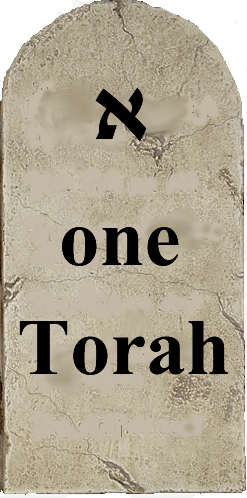Learn the Parable of the Fig Tree
Understanding Order
Matithyah (Matthew) 24:32-33
32 “Now from the fig tree learn her parable: when her branch is now become tender, and puts forth its leaves, you know that the summer is near;
33 even so you also, when you see all these things, you know that He is near, even at the doors.”
Most trees bloom in the spring, followed by putting forth leaves and then the fruit develops over the next couple of months under the protection of the tree’s leaves. However, this is not what happens on a fig tree.
Matithyah (Matthew 21:19
And seeing a fig tree by the way side, he came to it, and found nothing thereon, but leaves only; and He says unto it, “Let there be no fruit from you henceforward forever.” And immediately the fig tree withered away.
Yeshua came across a fig tree one day with leaves. When He went to pick a fig, He found none to pick. Why did He expect to find fruit on this tree? The fig tree is different than all other fruit bearing trees because it develops its fruit before it puts forth leaves. By the time a fig tree has leaves, the fruit is ready to pick. Thus, this particular fig tree was lying about itself, that is, it was declaring that it had fruit by the presence of its leaves, when in fact it had no fruit. Therefore, it ended up being cursed by the Master.
There is an obvious lesson here about bearing fruit or being cursed. However, that is not the lesson we wish to learn this day. We wish to learn the parable of the fig tree as it applies to the prophecies given by Yeshua in Matthew 24.
Here is what we would like for the reader to prayerfully consider. All other trees put forth leaves and then its fruit. The fig tree does not do it in that order. Rather, it puts forth its fruit and then the leaves. When one observes a fig tree in the summer which has leaves, then he knows that he can pick its fruit.
When looking at this particular prophecy then, we could see each prediction as an individual fruit, which shall come to pass out in the open, not under cover, not hidden. It may come to be hidden after the fact, but its actual fruition (fulfillment) shall be out in the open for all to see.
Furthermore, because the order of how the fig tree puts forth its fruit and then the leaves, suggests to us that the order of these prophecies is also important. If one sees something fulfilled out of order as given here, then while that may be a lessor fulfillment, it cannot be the ultimate fulfillment of this whole prophetic utterance. Let me give you an historical example.
When Titus was coming to lay siege to Jerusalem, the followers of Yeshua saw what was happening and left the city because of what Yeshua said as recorded in this chapter. However, we can know for certain that that event was not the ultimate fulfillment of this utterance by Yeshua, even though it had an application. Why?
Matithyah (Matthew) 24:15-16
15 “Therefore, when you see the abomination of desolation, which was spoken of through Daniel the prophet, standing in the holy place (let him that reads understand),
16 then let them that are in Judaea flee unto the mountains:”
In the case of Titus, who was certainly a type of abomination which causes desolation, they fled before he stood in the holy place. Here Yeshua states that the abomination which causes desolation shall stand in the holy place, and then when His followers see this, then they are to flee. This is learning the parable of the fig tree. Seeing it happen and then acting. Having all these things, each and every one of them happen in their proper order as given by Yeshua.
Please prayerfully consider this and do not live in fear of what might be.
Shabbat Shalom
Zerubbabel ben Emunah
www.onetorahforall.com

